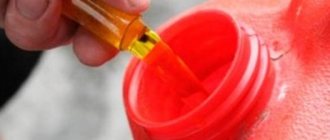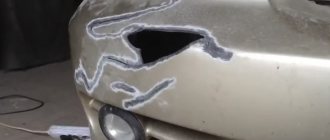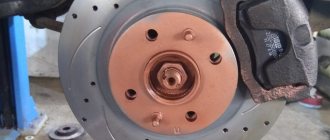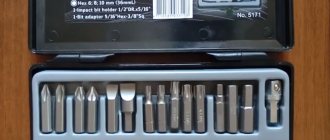How can you wash linden, poplar and pine from the surface of your car at home?
There are many examples of the use of household or pharmacy chemicals. Why is this direction attracting more and more car owners? The fact is that the properties of some drugs are not inferior to analogues from thematic auto chemical products, and their price is several times less. To be fair, we can give an example from a related area: how to polish plastic headlights yourself by hand - with toothpaste for several tens of rubles or a polishing kit for several thousand rubles?
So, you can wipe off poplar resin without a trace, traces from linden or glue from pine onto fresh:
- Ammonia (a solution of ammonia in water).
- Alcohol solution of boric acid (3%).
- Blue clay.
Coming closer to the technology of using this chemistry, the following point arouses interest: are they able to wash off the resin without harming the paintwork. Will this treatment leave various scratches and dull abrasions on the surface of the body?
Clay or medicines
When comparing contenders based on the level of damage caused to paint, clay is a clear outsider. It removes Velcro due to friction. When using alcohol and acid, there is practically no trace of it (it takes a little effort to wipe the stain, and the main mechanism for removing the tar residue is to dissolve it within 10-20 minutes).
Blue clay is often associated with a hologram effect. They say that if you rub in a circular motion, the treated surface will be noticeably different from the untreated one. In theory, it is necessary to scrape off poplar glue and resin residues from other trees only with translational longitudinal movements, without strong pressure, after first moistening the defective area with a soap solution.
Ammonia and boric acid do not spoil paintwork at all. Negative reviews about them are associated with ignorance of the technology, how to remove poplar buds or Velcro from linden or pine from the surface of a car with your own hands. There is only one remark about the drugs - they act slowly.
What about petroleum based solvents?
Products of petroleum origin and tree resin are reluctant to be washed off. We are talking about such varieties as:
Universal white spirit will only save you from minor contamination. If they can still remove a fresh tarry trace, then even a two-day-old trace of a solvent-like liquid cannot be removed. WD-40, gasoline, kerosene and carburetor cleaner do a better job than white spirit, but they are far from being as effective as medications.
Other means
The global automotive and household goods industry does not stand still. For example, wet wipes with alcohol appeared relatively recently. In the fight against fresh marks, they have proven themselves to be a good remedy. You just need to brush off the buds so that they don’t open. How to do this is one of the topics of further discussion.
Removing the resin
Want to know how to remove tar from clothes? The secret is that you don’t even need to wash it! The first step towards clean clothes will be the mechanical removal of contamination.
- The easier it will be to remove stains the more resin you can remove before using solvents. Make your job easier by picking off as much resin as possible with a sharp object or, if you don’t have anything sharp on hand, with your fingernails.
- If you have removed almost all the resin, you can skip this step, but if you still cannot see the structure of the fabric through the resin, you need to reduce the amount even further. To do this, throw the clothes in the freezer for an hour or put something cold on the stain, such as frozen vegetables or meat. After freezing, some more resin can be cleaned by rubbing the stain; the resin should crack and fall off, leaving behind a less intimidating stain.
- Another mechanical method for removing resin can be considered heating the contamination with an iron, so that the resin, having assumed a viscous state, transfers to prepared substrates in the form of a sheet of paper napkins or a strip of cotton fabric. This method is suitable if you have already tried both of the previous methods, but there is still a lot of resin in the fabric structure, and if you do not want to remove the stain with solvents from delicate or dyed fabric. For those who still intend to resort to less gentle methods, this stage is not at all necessary.
Advice
To prevent dirt from spreading across your clothes while you are trying to clean it, sprinkle the area around with talcum powder, moisten with water or lubricate with oil.
How to remove poplar resin, traces of linden and pine from a car body with your own hands
Getting rid of Velcro means making sure that not even a speck remains from the contact of a tree bud with the paintwork. As already noted, the fourth day is the deadline when the body surface can still be saved without the use of polishing. Later, chemistry is no longer able to remove the famous yellowness that remains after removing the resin.
The proposed method is relevant precisely from the moment the poplar, pine or linden tree gets in contact with Velcro until the end of the fourth day:
- Remove buds from the body surface. This must be done so that the resin does not leak out of them. Use the following method: dampen a cloth in warm water, wring it out as much as possible and brush the tree flowering products to the side. Dry rags are not suitable for these purposes - they do not allow brushing. You should not remove it with your hands or a brush - the Velcro will open at the slightest hard touch.
- Wash the outside of the car. Contactless washing is preferred because it leaves fewer scratches.
- Wipe the body dry. There is no need to worry about defective areas - ingrained resin cannot be smeared with a rag.
- Remove tar stains. Soak a piece of cotton wool or a cotton pad in alcohol/acid and, without applying much effort, wipe off the resin. In most cases, the Velcro mark needs to be soaked: place a swab soaked in chemicals on the contaminated area and leave for 10-15 minutes. After soaking, the stain is removed with a slight movement of the hand.
- Final cleaning of the treated area. Produced using special auto chemicals to remove resin. Usually this is any can with the Bug & Tar Remover attachment. The operation is not always necessary; it is done at will.
Washing the stain
No matter what delicate methods of getting rid of resin from pine and other coniferous trees you find on the Internet, their effectiveness and speed of action cannot be compared with the power of solvents. Of course, all of these substances are quite aggressive, and we recommend testing them on a small, inconspicuous area of clothing before pouring them into the stain. But they are the ones who are able to wash off the resin almost instantly and save a lot of time, and in a world with a frantic pace of life, this is quite a valuable property.
We recommend: How to remove chewing gum from clothes without leaving stains?
Let's start with the product that has the most positive reviews, and this is regular alcohol. By soaking a cotton swab or cotton swab in rubbing alcohol and lightly rubbing the stain, you can clean your clothes in just a few minutes. But this is if you did not neglect the preparatory stage and removed the maximum amount of resin mechanically. You can try to remove a thick layer of resin with alcohol for days and weeks - that’s how important the first stage is. If your contamination is not too old and you did everything according to our instructions, then most likely you will not have to do anything else. In this case, alcohol will have the least destructive effect on the color and structure of the fabric.
What to do with a stain that cannot be washed off with alcohol? More aggressive means that will not stand on ceremony with contamination will help to scrub it off:
- "White Spirit";
- acetone;
- ammonia;
- refined gasoline;
- turpentine.
You can even remove the resin with nail polish remover if you have nothing else at hand. However, it’s worth making a reservation that you won’t be able to wipe off the stain with regular gasoline that you fill your car with: you’ll just put a new stain on your clothes. In addition, it is better to apply any of these products with a cotton swab, without touching the clean area of the fabric, so as not to damage its structure.
Advice
Using a solvent is the fastest way to clean clothes, but it's worth considering the damage it could potentially cause. If the fabric is too thin and its dye is not very durable, it is better to spend more time and remove the stain with alcohol than to cry over an irreparably damaged item later.
Note: test review of automotive resin cleaners
Just as in the case of gasoline additives for cleaning injector nozzles, quite a few auto chemical manufacturers have rolled out their anti-bitumen products to the market. There are representatives of both well-known foreign companies and domestic teams.
The magazine "Behind the Wheel" tested products from various manufacturers. The essence of the test procedure was to evaluate the effect after using the drug in full accordance with the instructions. Resin cleaners from the following companies took part in the “race”:
- Liqui Moly (Germany – 475 rubles/400 ml).
- Kangaroo (Korea – 330 rubles/400 ml).
- Grass (Russia – 255 rubles/500 ml).
- Doctor Wax (USA – 690 rubles/475 ml).
- Autoprofi (Russia – 170 rubles/500 ml).
- Astrohim (Russian Federation – 150 rubles/500 ml).
- Sonax (Germany – 460 rubles/300 ml).
- Pingo (Germany – 520 rubles/400 ml).
- Texon (Russia – 140 rubles/520 ml).
Conventionally, products are divided into two groups: fast-acting (Astrochem, Liqui Moly, Kangaru, Avtoprofi, Sonax, Pingo), requiring long exposure (Grass, Tekson).
Theoretically, the following is expected: the former do not drain, concentrating the entire volume on the affected area, the latter dissolve stains more effectively, but require more consumption. Practice confirms this. When choosing, it is important to consider the smell. The procedure for interacting with the drug is often slow, so the aroma should not be strong. Everything is aimed at not causing discomfort to the operator, especially in the heat. The mixture from Astrohim most accurately satisfies these conditions.
How not to remove resin
The resin has a fairly viscous, sticky structure, but after it dries it turns into stone, and therefore many car owners try to remove it mechanically by picking up the dry substance. But by doing this they can damage the surface, accidentally leaving a few scratches. Other craftsmen try to remove resin using solvents or various cleaning agents. But just like scraping off dry resin, removing it can also damage the surface!
"Folk" means of removing resin from a body
The simplest and most effective way to remove resin, which does not require financial costs and too much effort, is to “soften” it using regular margarine. The resin contains a certain level of water in its composition. Only after it evaporates in the open air does the resin begin to thicken and eventually dry out!
In view of the above, you can conduct a small experiment, during which you put a small piece of resin in water for a while. As a result, after a few hours, you will be able to see how the dry “pebble” will turn into a substance resembling gelatin. It will still be the same resin, but softened to its original state, in which it can be easily removed from any surface!
Just like water, margarine (or any other oil) can soften the resin. This will take much longer than softening it with water, but it is the only way to soften the resin directly on the body so that it can be safely removed with a clean, soft cloth.
In addition to this remedy for removing tar from the body, there are also such “folk” remedies as:
- acidic drinks (Coca-Cola, Fanta, Sprite, etc.);
- lemon acid;
- table vinegar.
All these “remedies” have one thing in common - acid in the composition. But unlike harsh cleaners, which also contain acids, these substances are gentle and cannot harm the body coating. However, even when using them you should be careful! Removing tar from a body using such simple and inexpensive methods is much more effective than removing it using expensive special products or car wash services. And if the result is better, then why pay more?!
How to get rid of resin
There are different ways to remove resin stains, you just need to choose the right one for a particular material. If you neglect this point, you can ruin the item, because delicate fabrics can deteriorate under the influence of too aggressive agents, for example, paint will come off.
Heat treatment
This method can only be used to save thin fabrics from resin. You just need to set the iron to a setting that can be used on delicate fabrics. Place paper napkins on both sides of the fabric in the area of the stain. In addition to napkins, you can also use a waffle towel. Thermal treatment of fabric should be carried out on a heat-resistant surface. The resin will begin to melt under the influence of heat and will stick to the napkins, which need to be replaced with clean ones. Afterwards, the item is rubbed with household pulp and left to soak for half an hour. At the end, start the washing machine as usual.
In addition to the iron, you can use a hair dryer, but only on leather products. To do this, blow hot air onto the stain for several minutes.
REFERENCE! Under its influence, the resin stain melts and can then be easily cleaned with an alcohol wipe.
other methods
Alcohol, gasoline, acetone
The listed substances are aggressive, so they cannot be used on delicate fabrics. This is due to the fact that they can thin the fibers of the fabric and then the item will tear. Tar stains stuck to jeans, down jackets and jackets can be removed with the proper use of chemicals. To do this, a cotton pad is heavily moistened in alcohol, acetone or gasoline and applied to the contaminated area for 15-20 minutes. After this, the product must be washed with laundry soap, and then washed as usual in a washing machine with the addition of conditioner. Solutions with alcohol do a good job of removing resin from woolen items. You should clean things with such products and dry them after washing in the fresh air, because the volatile vapors of these substances can have a negative effect on human health.
Ammonia, starch, turpentine
To remove tree resin from clothes, it is better to use gum turpentine, as it is safer and does not have such a strong odor. The mixture of these substances is gentle on the fabric, so it can be used to get rid of tar stains from children's clothing and other cotton items. To do this, you need to mix the listed products in the following ratio:
- potato starch - 1 tsp;
- turpentine - 1 ml;
- ammonia - 1 ml.
These substances should be mixed in an enamel bowl, then the mixture is applied to the stain and left until completely dry. After this, the residues are scrubbed off with a brush, the item of clothing is placed in the washing machine and started on a normal cycle.
REFERENCE! This procedure can be repeated again if the method did not help the first time.
Lemon acid
Citric acid crystals can dissolve old tar stains on clothing, even light-colored jeans. To do this, mix warm water and citric acid in equal proportions and apply to the contaminated area. To get rid of residues, use a brush to rub the dirt from the edge to the center. After this, the item is washed by hand using laundry soap or in a washing machine on a normal cycle.











